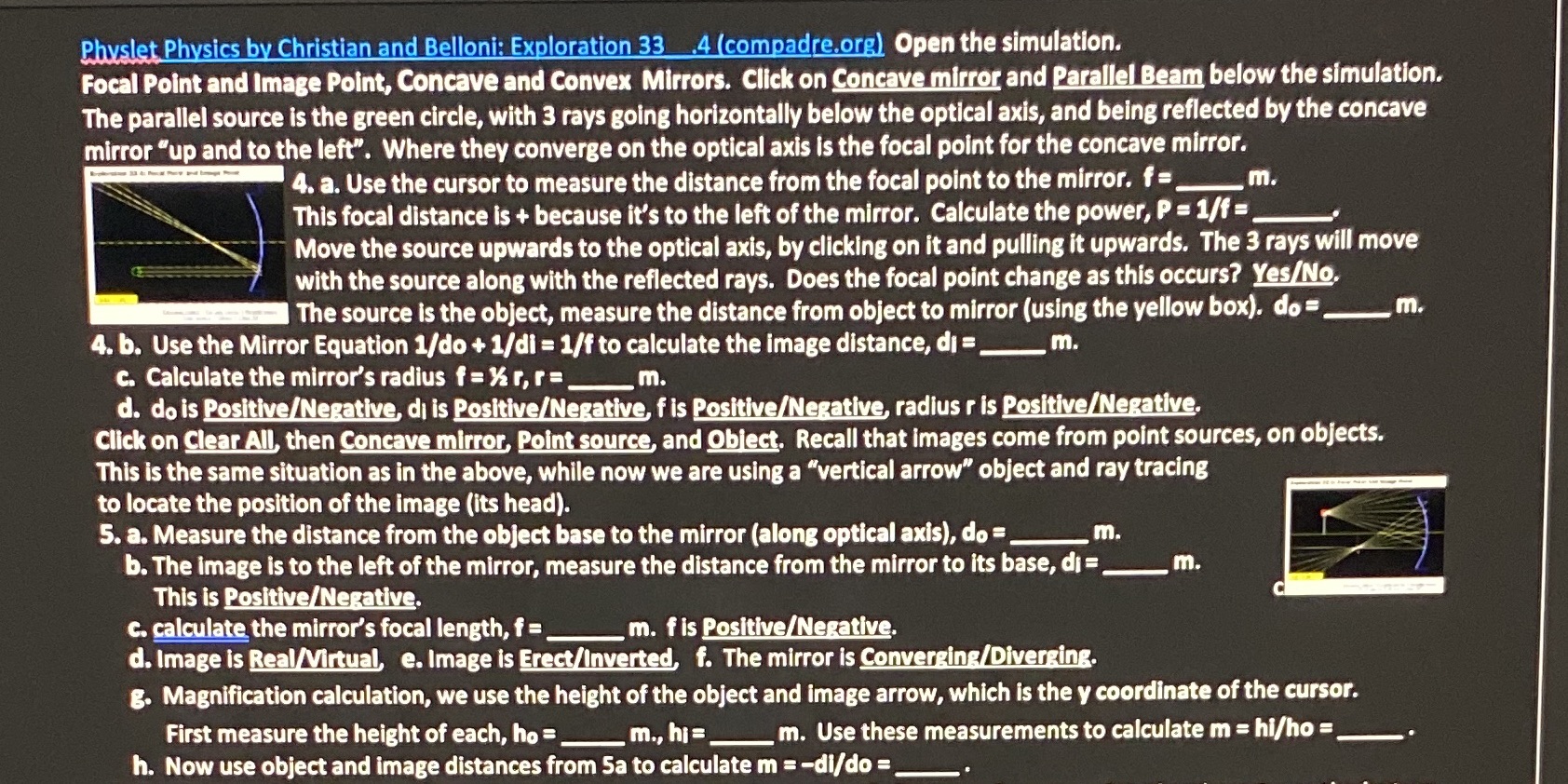Physlet Physics by Christian and Belloni: Exploration 33 .4 (compadre.org) Open the simulation. Focal Point and Image Point, Concave and Convex Mirrors. Click on Concave mirror and Parallel Beam below the simulation. The parallel source is the green circle, with 3 rays going horizontally below the optical axis, and being reflected by the concave mirror "up and to the left". Where they converge on the optical axis is the focal point for the concave mirror. 4. a. Use the cursor to measure the distance from the focal point to the mirror. f= m. This focal distance is + because it's to the left of the mirror. Calculate the power, P = 1/f = Move the source upwards to the optical axis, by clicking on it and pulling it upwards. The 3 rays will move with the source along with the reflected rays. Does the focal point change as this occurs? Yes/No. The source is the object, measure the distance from object to mirror (using the yellow box). do = m. 4. b. Use the Mirror Equation 1/do + 1/di = 1/f to calculate the image distance, di = m. C. Calculate the mirror's radius f = yr, r=_ _m. d. do is Positive/Negative, dj is Positive/Negative, f is Positive/Negative, radius r is Positive/Negative. Click on Clear All, then Concave mirror, Point source, and Object. Recall that images come from point sources, on objects. This is the same situation as in the above, while now we are using a "vertical arrow" object and ray tracing to locate the position of the image (its head). 5. a. Measure the distance from the object base to the mirror (along optical axis), do = m. b. The image is to the left of the mirror, measure the distance from the mirror to its base, di = m. This is Positive/Negative. c. calculate the mirror's focal length, f =_ m. f is Positive/Negative. d. Image is Real/Virtual, e. Image is Erect/Inverted, f. The mirror is Converging/Diverging. g. Magnification calculation, we use the height of the object and image arrow, which is the y coordinate of the cursor. First measure the height of each, ho = m., hi= m. Use these measurements to calculate m = hi/ho = h. Now use object and image distances from Sa to calculate m = -di/do =







